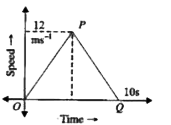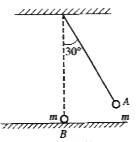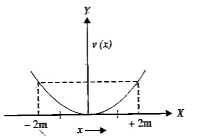Complete Solutions to SHORT ANSWER QUESTIONS of chapter DYNAMICS of Class 11 book with complete answers and questions
| Class 11 | PHYSICS |
| Chapter | DYNAMICS |
| S CHAND | SHORT ANSWER QUESTIONS |
| Number Of Questions | 93 |
| Academic Year | 2023-24 |
Give an example of a body which is at rest with respect to one body, but is in motion with respect to another.
View SolutionWhile dealing with translatory motion of extended bodies why do we treat them as point object?
View SolutionUnder what condition can we treat a train as a point object?
View Solution'Motion of a planet around sun in its orbit is considered as an example of two dimensional motion,'' Why?
View Solution'Distance travelled by a body cannot be negative''. Why?
View SolutionGive an example of body for which there is change of position but displacement is zero?
View SolutionA body is moving along a circular path. When it completes on rotation what is
The distance travelled.
View SolutionA body is moving along a circular path. When it completes on rotation what is
The displacement of the body?
View SolutionAverage velocity and instantaneous velocities are generally not the same. Is it possible that they are equal for any type of motion? If so give example.
View SolutionIs it possible that the velocity and acceleration of a body have opposite signs? Give on example.
View SolutionIs it possible that the velocity of a body is zero and still the body has acceleration?
View SolutionThe average velocity of a body is not zero for some time interval. Does this mean that the instantaneous velocity is never zero during this time? Explain.
View SolutionIf the average velocity of an object is zero in some time interval , what can you say about the displacement of the object for that interval?
View SolutionCan a particle have the magnitude of the intantaneous velocity greater than the magnitude of its average velocity?
View SolutionComment on the statement rest and motion are relative terms'. Give an example.
View SolutionWhich of the following motions is one, two or three dimensional?
A ship in a rough sea.
View SolutionWhich of the following motions is one, two or three dimensional?
Insat-IIB revolving round the earth.
View SolutionWhich of the following motions is one, two or three dimensional?
A person running along a straight track.
View SolutionWhat is meant by relative velocity ? Write an expression for the velocity of A and B particle relative to the other moving with velocities `v_` and `v_` along a straight line.
View SolutionThe speed-time graph of a particle moving along a fixed direction is shown in Fig. Find the distance travelled by the particle between `t= 0" to " t= 10s`. Also find average speed.

View Solution'Projectile motion is an example of two dimensional motion.'' Why ?
View SolutionIs the motion of a freely falling body an example of projectile motion?
View SolutionWhy we assume that there is no air resistance while studying projectile motion ?
View Solution'During projectile motion which quantity remains constant throughout its motion.'' Why?
View SolutionIs the velocity of a projectile at its maximum height zero ? Why ?
View Solution'Suppose a marble falls freely from a height and another similar marble is projected horizontally from the same height at the same instant, which will reach the ground first.'' Why?
View SolutionWhich of the following is an example of projectile ? (a) a rocket in flight (b) an artificial satellite orbiting the earth.
View SolutionA train moving with uniform speed. A passenger in the train drops a spoon. What is the path of the spoon as observed by a man
In the train.
View SolutionA train moving with uniform speed. A passenger in the train drops a spoon. What is the path of the spoon as observed by a man
Outside the train at rest ?
View SolutionShow that there two times for which the projectile convers the same vertical distance and their sum is equal to the time of flight.
View SolutionWhat is the effect of air resistance on the velocity of a projectile ?
View SolutionAt what angle should an athlete throw a javeline for maximum range ?
View Solution'A projectile is under constant acceleration.'' Then why its path is not a straight line ?
View SolutionThe maximum height to which a person can throw a ball is H. What is the maximum horizontal distance to which he can throw the same ball ?
View SolutionA projectile is fired
On the Moon, with same initial velocity and the same angle of projection. Neglecting air resistance, which projectile has greater range ? Which reaches the maximum height first ?
View SolutionIf the value of g changes how does it affect the path of a projectile ?
View SolutionA lemon is dropped from the upper bearth of a train. Will it hit the floor at the same point, whether the train is at rest or in motion with constant velocity ?
View Solution'An empty train starts more quickly than a loaded train''. Why?
View SolutionIf we jerk a piece of paper from under a book quick enough, the book will not move. Why?
View Solution'A man jumping out of a moving train falls with his head forward''. Why?
View SolutionA bob is suspended by a cord from the ceilling of a car. What is the effect on the position of the bob if
The car moves with constant velocity.
View SolutionA bob is suspended by a cord from the ceilling of a car. What is the effect on the position of the bob if
The car moves with a constant acceleration.
View SolutionA bob is suspended by a cord from the ceilling of a car. What is the effect on the position of the bob if
The car takes a left turn?
View Solution'A ball thrown vertically upwards by a person sitting in a train comes back to his hands''. Why?
View Solution'When the branch of a tree is shaken, the fruits fall''. Why?
View Solution'A person on a horse's back tends to fall if the horse starts running all of a sudden''. Why?
View Solution'The water drops sticking to a cycle tyre are found to leave it tangentially''. Why?
View Solution'When a body falls to the earth, the earth also moves up to meet it, but earth's motion cannot be seen''.
View SolutionTwo bodies of different masses are made to fall from the same height. If both of them experience the same resistance, will the two bodies reach the earth simultaneously?
View Solution'A man standing in a lift going downward with uniform velocity experiences a loss of weight at the start, but not when the lift is in uniform motion''. Why?
View SolutionAction force and reaction force are equal and opposite to each other. If it is so, how can there be a net force on an object?
View SolutionWhy it is difficult to measure the impulsive force?
View SolutionWhat are the conditions for calling a force as an impulsive force?
View SolutionWhile stating the law of conservation of momentum why should we say that ''no external force acts on the system''?
View SolutionOut of the three Newton's laws which is the law of motion? Why?
View Solution'A cricket ball and a table tennis ball are moving with the same velocity. Which is easy to catch''. Why?
View Solution'The floor exerts an upward force on a person standing on the floor''. Then why is the person not moving upwards?
View Solution'A boxer moves his head backward just before receiving a punch''. Why?
View Solution'A karate man can break a heap of bricks with a swift blow with the side of his bare hand''. How is it possible?
View Solution'When a ball falls towards the earth, its momentum increases''. Do you think this is a violation of law of conservation of linear momentum? Explain.
View Solution'Do you think that a large force always produce a larger impulse on a body than a small force? Explain.
View SolutionWhy do we say that the work done by a coolie carrying a suitcase along a horizontal road is zero?
View SolutionWhy do we prefer to use work-energy concept to slove the dynamics of a mechanical system instead of Newton's laws?
View SolutionForce and displacement are vectors. But work is scalar, why?
View SolutionIs it possible that the work done by a force is negative? Given an example.
View SolutionWhen we lift a body we apply force ? Don't you think that the body is gaining kinetic energy with height? Explain.
View SolutionIs frictional force a conservative force or a non-conservative force ? Why it is called so ?
View SolutionWhile calculating work done by a varying force, why do we calculate the work for small displacements `triangle x` ?
View SolutionWhen can you say that a body has potential energy ?
View SolutionWhat is the P.E. of a mass kept at the centre of the earth ?
View SolutionWhat is the purpose of defining power ?
View SolutionWhich conservation law is applicable to a body moving under non-conservative force ?
View SolutionCan kinetic energy be negative ? Explain.
View SolutionCan the average power be equal to the instantaneous power ?
View SolutionCan you exert force on a body without doing work ? Give one example for a body at rest and another one for a body in motion ?
View Solution'For one person the kinetic energy of a body is zero whereas for another person it is not zero''. Is it possible ? Explain.
View SolutionIn inelastic collision momentum is conserved, but kinetic energy is not conserved, why?
View SolutionExplain the energy transformations in a pole vault event ?
View SolutionA ball is dropped from the top of a building by a person. Another person observes its motion from the bottom. Will they agree on the values of the ball's potential energy, and its change in P.E.?
View SolutionA small cake of wet cement thrown at a comer in a wall remains glued to the wall. What happens to its initial energy ?
View SolutionA bob A of a pendulum released from `30^(@)` to the vertical hits another bob B of the same mass at rest on a table as shown. How high does the bob B rise after the collision ? Neglect the size of the bobs and assume the collision to be elastic.

View SolutionThe poteintial energy function for a particle executing linear simple harmonic motion is given by `V(x) = (1)/(2) Kx^(2)`, where K is the force constant of the oscillator. For `K = (1)/(2) Nm^(-1)`. The praph of V (x) versus x is shown in Fig. 4.4.44. Show that a particle of total energy 1J moving under this potential must ''turn back'' when it reaches `x = pm 2m`.

View SolutionComet moves around the sun in highly elliptical orbits. The gravitational force on the comet due to the sun is not mormal to the conet's velcoity in general. Yet the work done by the gravitational force over every complete orbit of the comet is zero. Why ?
View SolutionChemical, gravitational and nuclear energies are nothing but potential energies for different types of forces in nature. Explain this statement clearly with exampels ?
View SolutionWhat the minimum amount of energy released in the annihilation of an electron-position pair?
View SolutionWhat is kilowatt hour?
View SolutionWork done during the motion of body on a closed loop is zero for every force in nature. Is it true ?
View SolutionExplain the terms
resultant. How are they related ?
View SolutionExplain the terms
Equilibrant. How are they related ?
View SolutionThree forces can be represented by the three sides of a triangle. What can you say about the forces?
View SolutionOne rectangular component of a forces is 5 N and the other coponent is `8.66N`. What is the angle made by the resultant with the 5 N force?
View SolutionCan a body be is equilibrium, even if only external force acts on it ? Explain.
View SolutionCan a body be in equilibrium, if it is in motion? Explain.
View Solution
SHORT ANSWER QUESTIONS questions and complete solutions for chapter DYNAMICS of S CHAND PHYSICS (ENGLISH) of Class 11